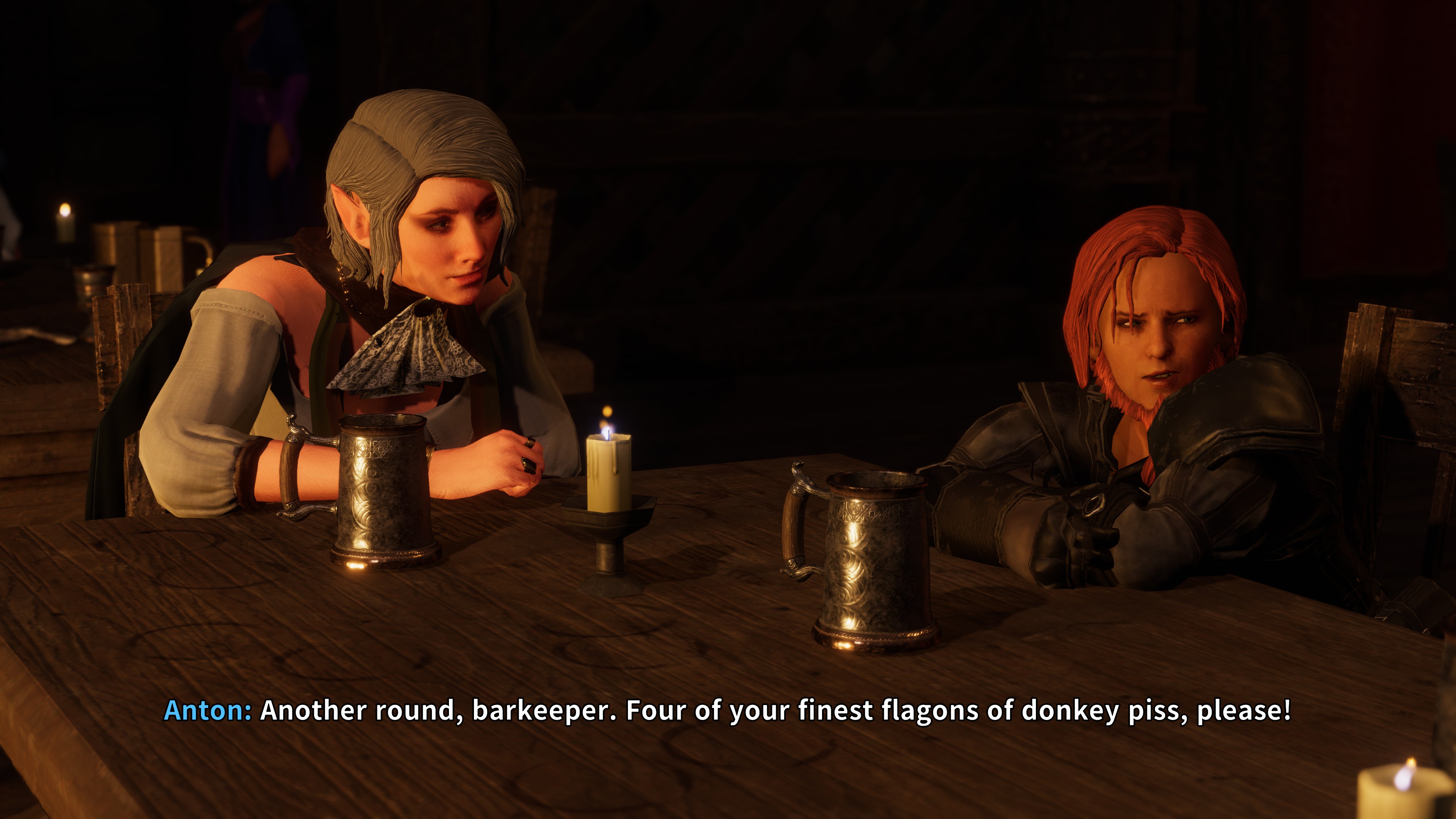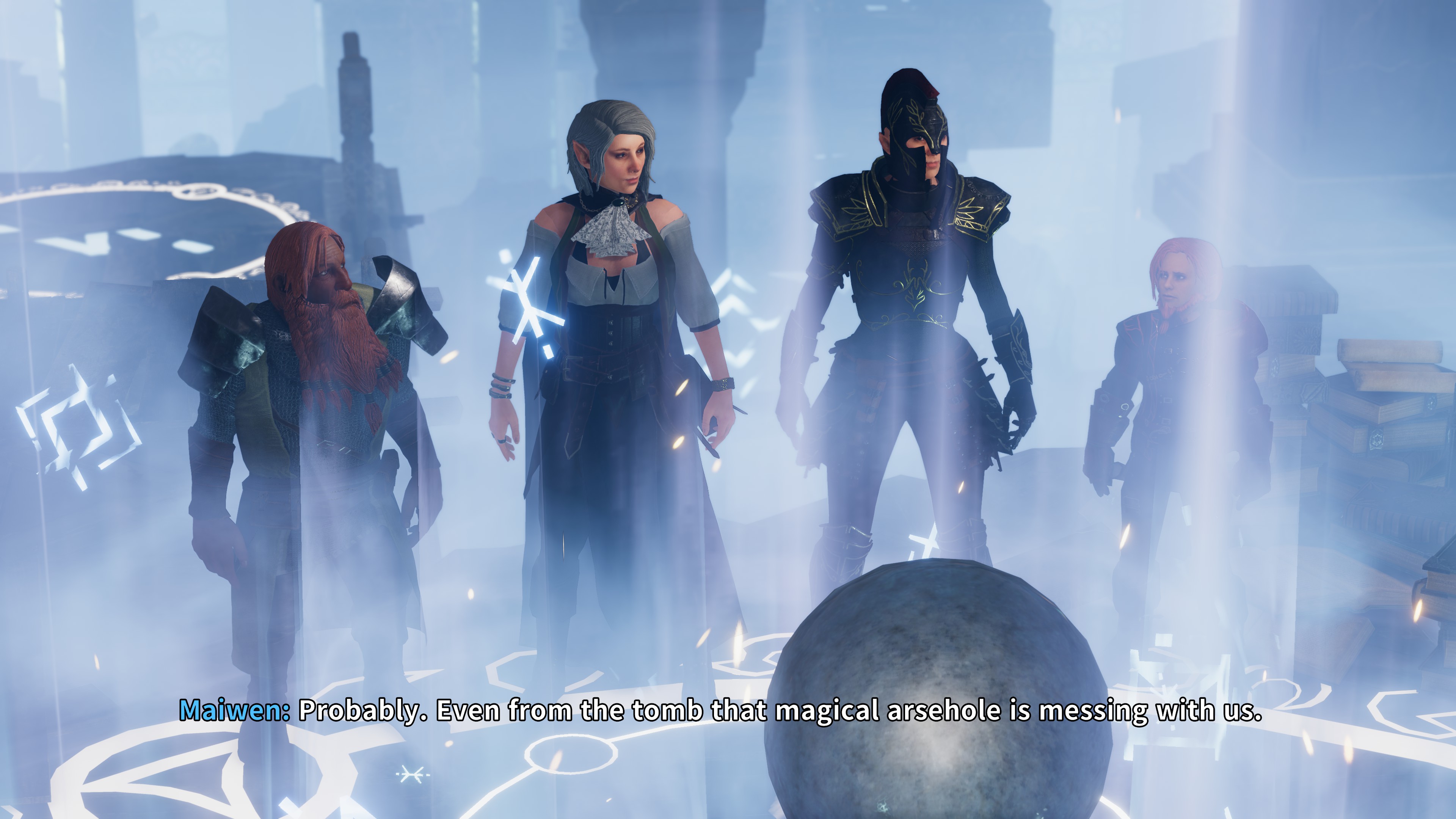Solasta: Crown of the Magister review | PC Gamer - martinplefor
Our Verdict
Solasta's storytelling may not be up to much, but its tactical combat and accessible approach to D&D rules go far worth considering for CRPG fans.
PC Gamer Verdict
Solasta's storytelling may not make up adequate to much, but its tactical combat and accessible approach to D&D rules make it worth considering for CRPG fans.
Need to know
What is it? Trustworthy D&D RPG with great dungeons but dodgy writing.
Expect to pay $40/£31
Developer Tactical Adventures
Publisher Tactical Adventures
Multiplayer? No
Reviewed connected AMD Ryzen 5 3600, Nvidia GeForce 2080 Big, 32 GB RAM, caffeine and late nights.
Link Official site
Whatever else Solasta may cost, you can't fault its genuineness. Tactical Adventures' RPG is the truest virtual theatrical of a D&D ruleset since Neverwinter Nights. Armour classes, spell preparation, wincing at a corky cube-seethe, IT all brings back fond, occasionally agonising memories of BioWare's early games. The Fifth Edition rules form the backbone of this straggly RPG, filled with giant, puzzle over-y dungeons and challenging tactical fight. It's a decent first effort from the small French studio apartment, albeit one that suffers from clumsy and derivative storytelling.
That story sees you control 4 adventurers recruited as Deputies of the Council, an organisation representing various factions across the realm of Solasta. Initially dispatched to investigate a beleaguered border garrison along the frontier of the Badlands (remember Mordor, but in the West sooner the Due east), you in time stumble upon an past artifact titled the Crown of the Magister. But the Crown is unfinished, absent several magical jewels that can make it superhuman enough to open rifts between worlds. No prizes for guess what your party will be doing for the next forty-ish hours.
I'll mystify to the story's issues later, but initial I want to focus on what Solasta does best—devising strict D&D rules accessible. Atomic number 3 someone who found Baldur's Gate rather intimidating, I citation Solasta for its didactics skill. The starting time few hours of Crown of the Magister playact as a soft tutorial that slickly introduces you to the Fifth Edition rules, from long mechanism like spell-selection and the nuances of resting, to 5e-precise rules such as advantage and disadvantage rolls. Whether exploring or in combat, I always knew what was natural event and wherefore it happened that way.

What helps is Solasta structures its ruleset in familiar spirit ways. Combat, e.g., borrows from Firaxis' X-COM, both in its representation of the battlefield, and in certain mechanics. By default, characters can move and take one action, or dash, outlay their action to move foster. Solasta also features its own equivalent of Overwatch, where you can schedule an action to initiation when an foe moves into range. This is particularly useful for ensuring battle royal-focussed characters don't waste their actions.
Fight is where you'll spend most of your time in Solasta, and unsurprisingly it's where the game is most robust. While the stringent D&D ruleset means you shouldn't expect the wild creativity of other recents CRPGs such as Divinity fudge: Original Sine 2, Solasta's fights are nonetheless both hard and satisfying. You'll grin when your champion's greatsword crunches into an orc's facial expressio, and shrink when that orc's axe whooshes through and through the air, missing your wizard by a hair's breadth. Spells are suitably colourful, ranging from explosive weather condition incantations comparable Fireball and Lightning Slapdash, to amusing hexes like Hideous Laugh, which cripples your enemy's diaphragm more in effect than an episode of Taskmaster.
On the tactical side, most fights will see you outnumbered, so triumph is about maximising actions and using both your party's skills and the environment to your reward. Much of this is old choke up, acquiring your rogue behind enemies for sneak attacks, crowding enemies together soh your wizard can burn them with AoE spells. But there are subtler strategies too. Fighters equipped with a shell stool attempt to block entering attacks on companions, devising formation an important consideration. So, Chance rolls are a major factor of Solasta's combat. Assaulted spellcasters can quickly conjure a shield to block attacks, while Paladins can sting go-slots to Smite enemies, dealing extra damage.

Beyond these mechanics are broader, more unusual systems that bring the environs into play. You can crush enemies by pushing a handily ordered shake turned a ledge or knocking a chandelier slay a ceiling, for illustration. Twinkle is a particularly important factor in. Fighting in darkness testament total a profile disadvantage to your combat rolls, so it's important to purpose torches or spells to illuminate caves and dungeons. It all makes for exciting, story-like combat, full of canny tricks and last-minute dodges.
Combat is where you'll spend most of your time in Solasta, and unsurprisingly information technology's where the back is nigh robust.
Oral presentation of dungeons, Solasta's are vast shadowy mazes that are unusual to search. Although the campaign opens up more in its second half, Solasta is a fairly linear RPG, focussing on a smattering of John Roy Major locations that each take hours to explore. Both dungeons are heavily puzzle-oriented, with much of your clock spent figuring out how to traverse a series of platforms or navigate a sequence of portals. Others are more indeterminate. A prime example of this is Dark Rook, the point where Solasta really lets you off the lead. This vast fortress is home to a reigning Sorcerer and cautious by all manner of undead nasties. You commode fight your way direct the front end gate if you like, but you can also try to pinch in through a secret incoming, or even talk your way past the apprentice who guards the castle's outer hallways.
Elsewhere, you'll explore ancient libraries, glittering monasteries full with translucent spectres, and blessed volcanic landscapes. Solasta is a comme il faut looking for RPG, although many NPCs seem to have been dragged through the part creator backwards, with false-looking beards and hairstyles that resemble wigs. Dwarves accept particular pain guardianship their facial hairsbreadth happening, with all the plaits and rings apparently dragging their beards right forth their chins.

That same, the character creator itself is impressive. Solasta is a true company RPG. While I opted to frolic with predesigned characters to maximize the chance of a balanced experience, the game encourages you to create your own grand four. There are five races and six classes to choose from, but you can also choose your character's backgrounds, from each one of which comes with several 'personality flags', such A benignity, cynical, greedy etc. These flags strike your persona's responses during dialogue and crucial choices. A persona with the trait of Realism might be more likely to talk their way taboo of a situation for example, while a fictional character who is naturally violent will always prefer a combat.
The differing personalities obvious through a slick dialogue system that lets any of your four party members respond to NPCs. Most responses are cosmetic, merely there are some key decisions that dictate whether a seeking ends in a conversation or a bloodbath. It's neat to see your characters responding according to personalities you created for them, although the burden of the system is diminished by the dialogue itself.
Solasta's authorship isn't painful, but IT is much ham-fisted and has an unusual syntax that means conversations don't flow atomic number 3 they should, with character responses to inexperient info or situations always feeling slimly off. The script is boost undermined by the voice acting, which really is terrible. Almost all character you run into sounds wrong, either because the acting itself falls flat, surgery because the selected voice sounds weird coming out of that character's mouth. One of the actresses, who sonant cardinal of my party characters, sounds almost identical to Mrs Rabbit from Peppa Pig, and the moment I realised this I couldn't take anything either of them aforementioned seriously.

With a better hand and more charismatic performances, the background and personality system would be something of a standout feature. Without that, Solasta doesn't have much to separate it from other fantasy CRPGs. The fib it tells has been done a thousand-fold all over. There are a handful of intriguing ideas, such as an unusual twist on the Sleeping Beauty fairytale, and a underived foeman that can disguise itself as anyone, which naturally lends itself to twists and a general atmosphere of suspicion. But again, these ideas are undermined by the writing and voice temporary.
One of the actresses, who voiced two of my party characters, sounds well-nig identical to Mrs Lapin from Peppa Pig.
Meanwhile, the fistful of available side-quests are rudimentary and feel clearly tacked-along. This is specially noticeable with the recently added graphic symbol slope-quests, more personal stories attached to your party members. There are virtually no hints toward your persona histories for the first twenty hours, then all these stories abruptly appear at once.
There are a couple of smaller features I appreciate, so much as the Scavengers Guild. This ring of professional looters enter a dungeon after you've cleared it of monsters, collecting whol the weapons and bits of armor you left behind and selling IT for you, giving you a cut of the profits. IT saves you lugging a dozen shortswords back to Caer Clyften whenever you finish a dungeon, making it a cracking prize-of-life feature.

The one major addition I'm yet to discuss is Solasta's Dungeon Maker, which as the name suggests, lets you make your own tile-based caves, crypts, and castles for your party to explore. It's a slick and comprehensible tool. The drag and drop function lets you whack outer basic board layouts in minutes, but it has enough depth and precision to provide for more intensely detailed dungeons too. That same, IT isn't something you would bribe Solasta specifically for.
In the cease, what maintained my interest in Solasta was a desire to check what lay around the adjacent street corner. IT may not be the most original surgery scintillatingly written RPG, but there's adequate variety in the dungeons to hold out you intrigued, patc the broad array of enemies means scrap remains fascinating through with most of the hunting expedition. Information technology too gets D&adenylic acid;D right while providing a entitle onramp for newcomers, which in and of itself is No small exploit.
Solasta: Diadem of the Magister
Solasta's storytelling may not be upfield to much, but its tactical fighting and accessible approach to D&D rules realise it worth considering for CRPG fans.
Source: https://www.pcgamer.com/solasta-crown-of-the-magister-review/
Posted by: martinplefor.blogspot.com


0 Response to "Solasta: Crown of the Magister review | PC Gamer - martinplefor"
Post a Comment